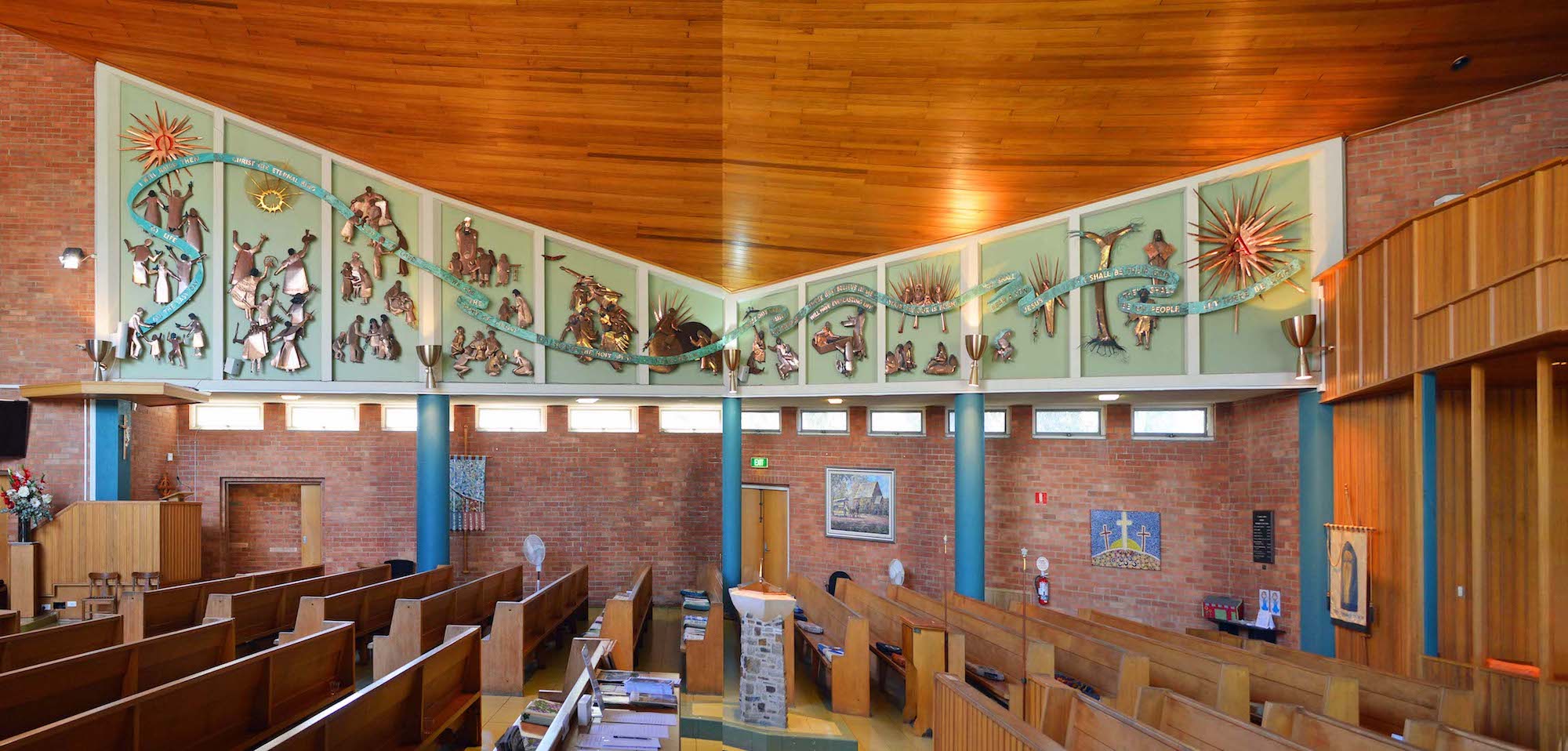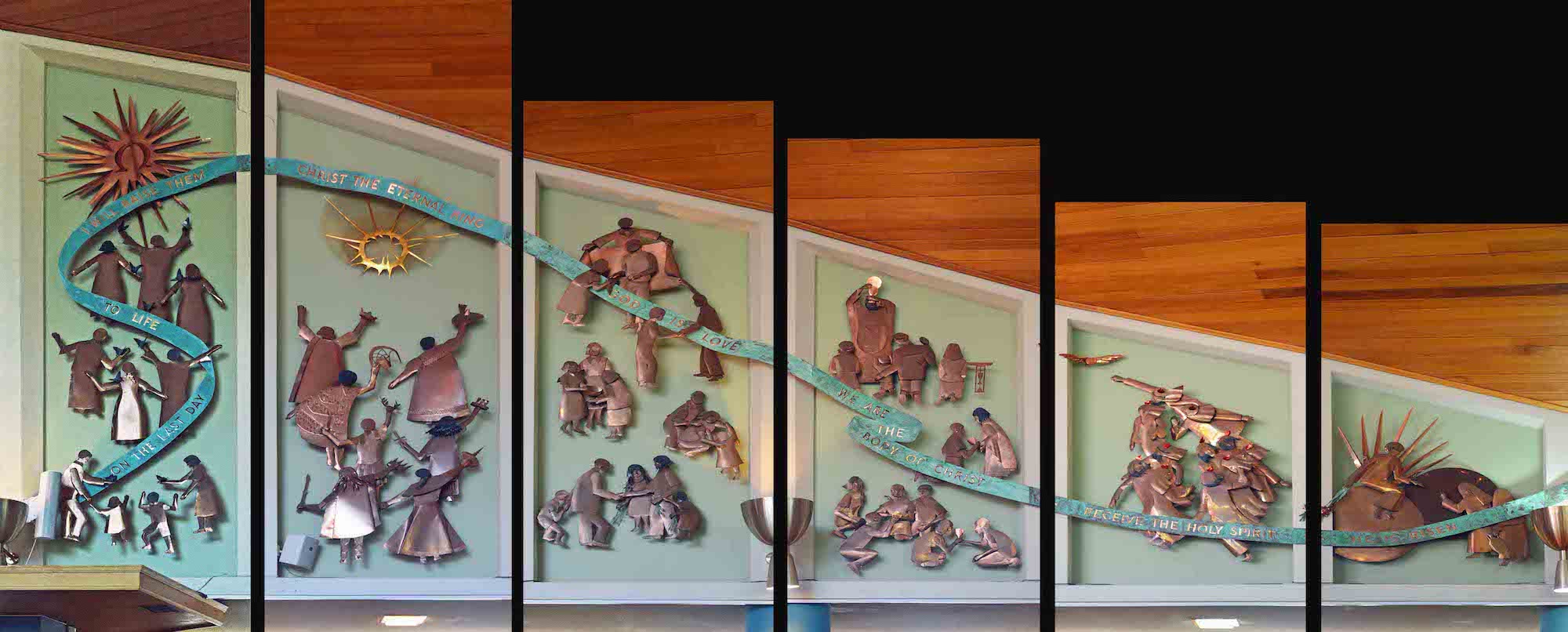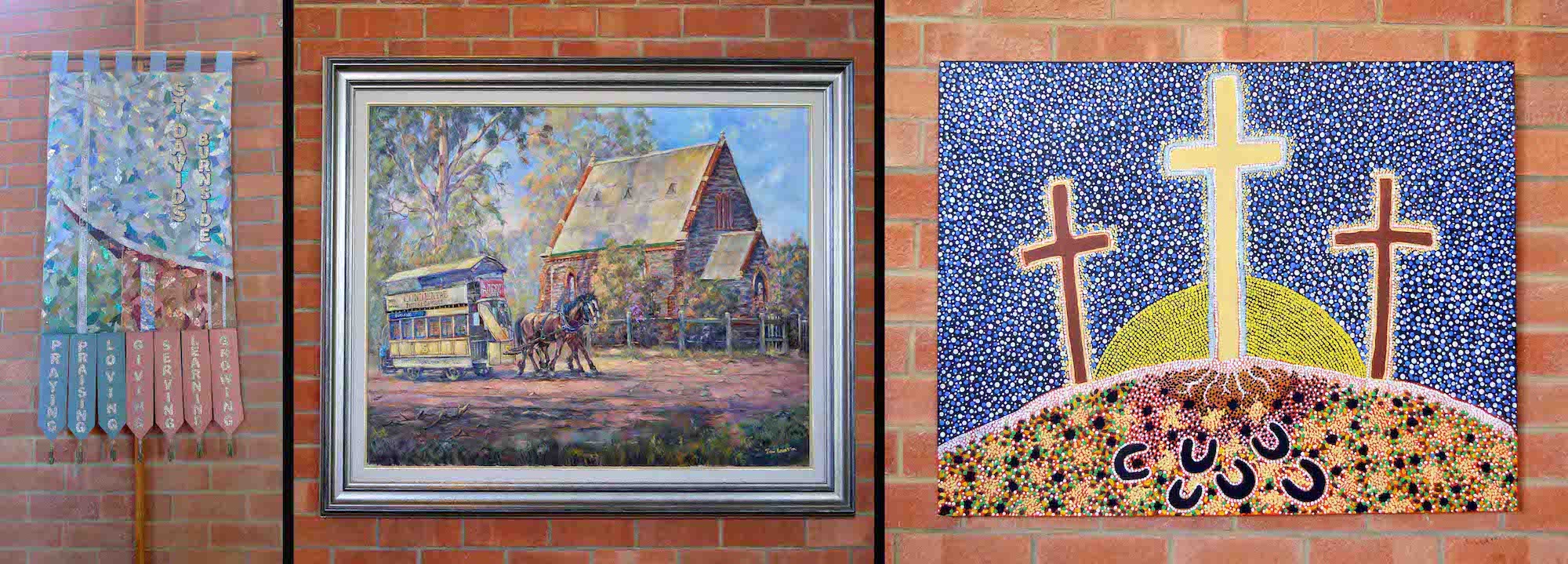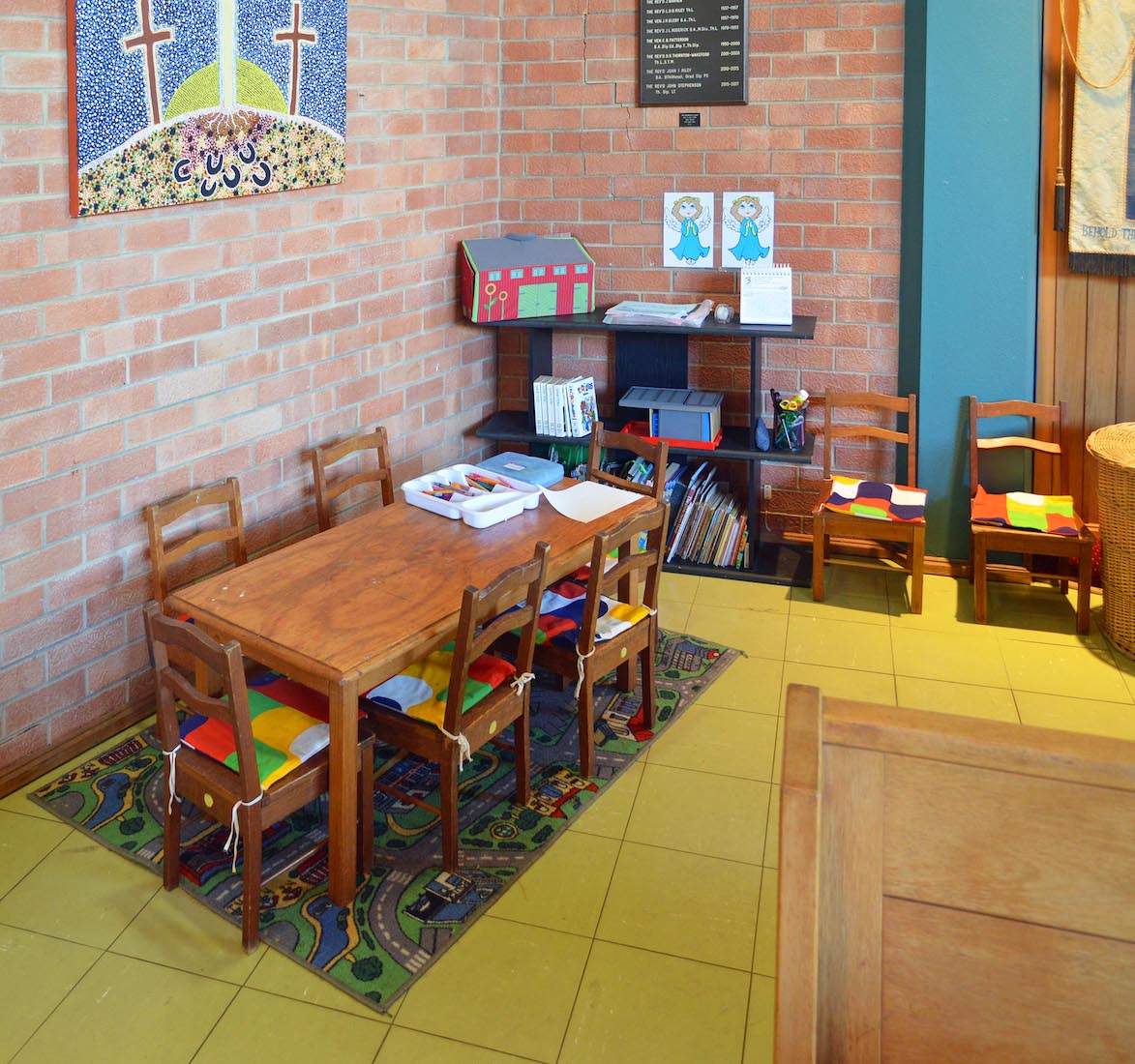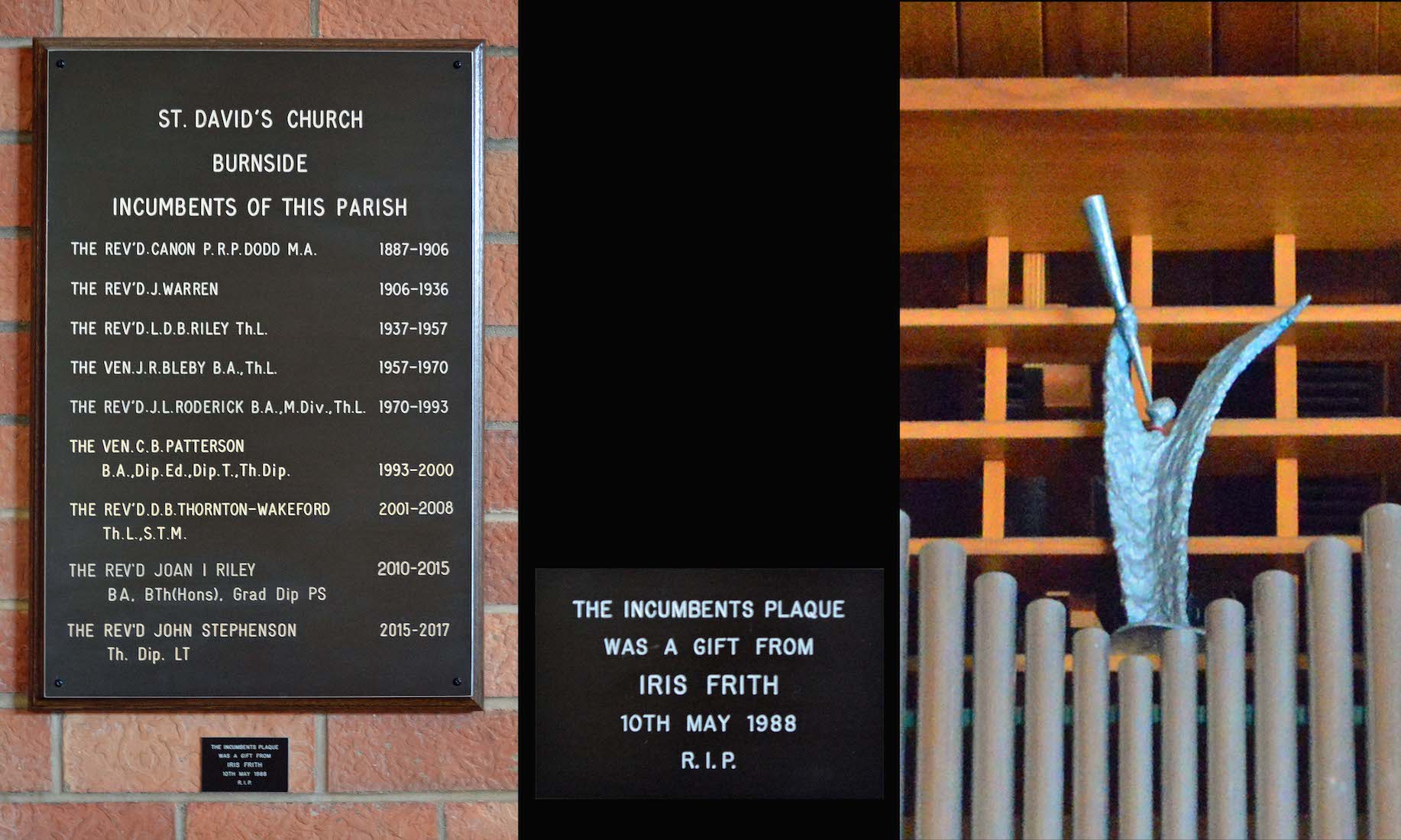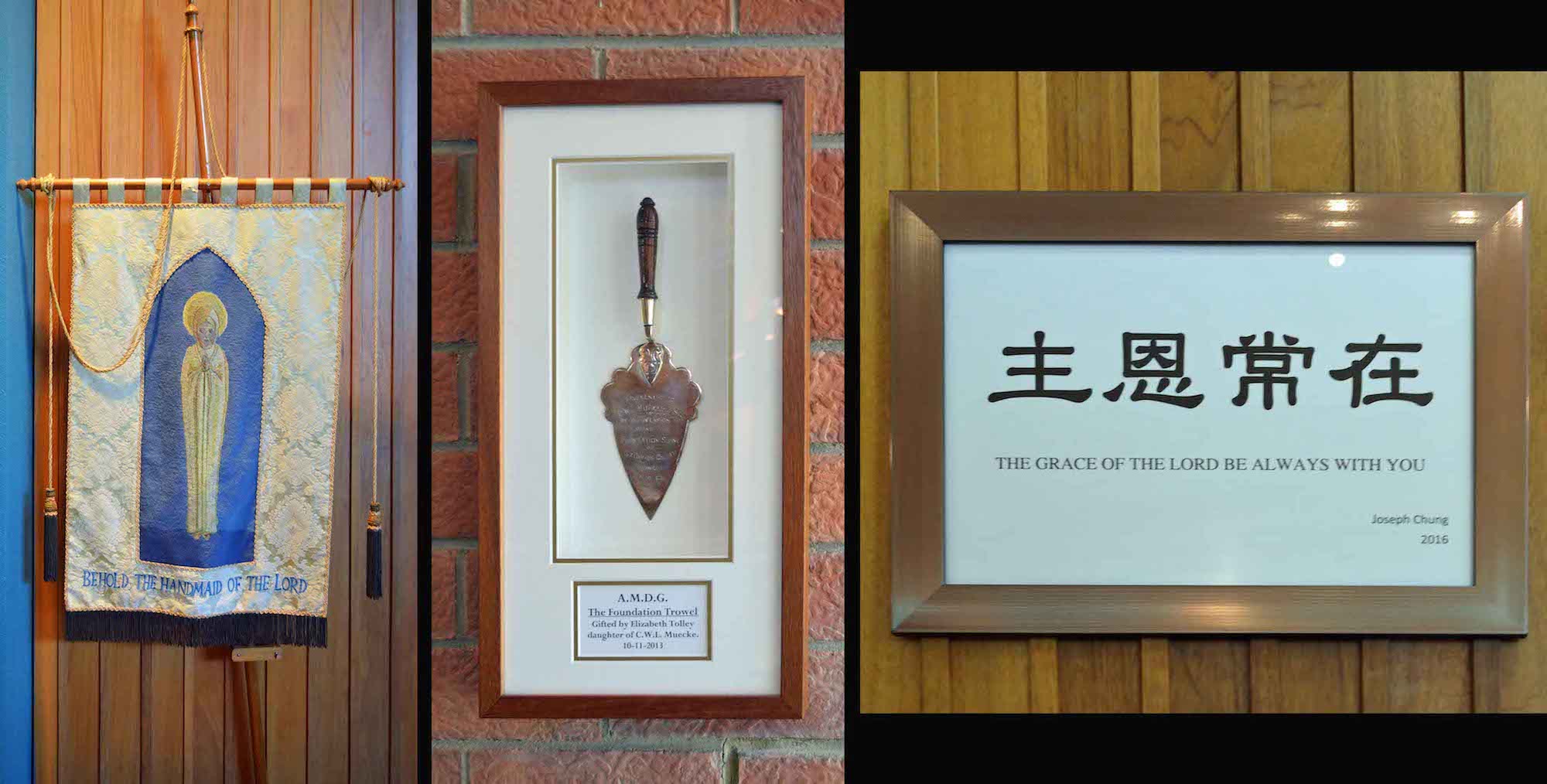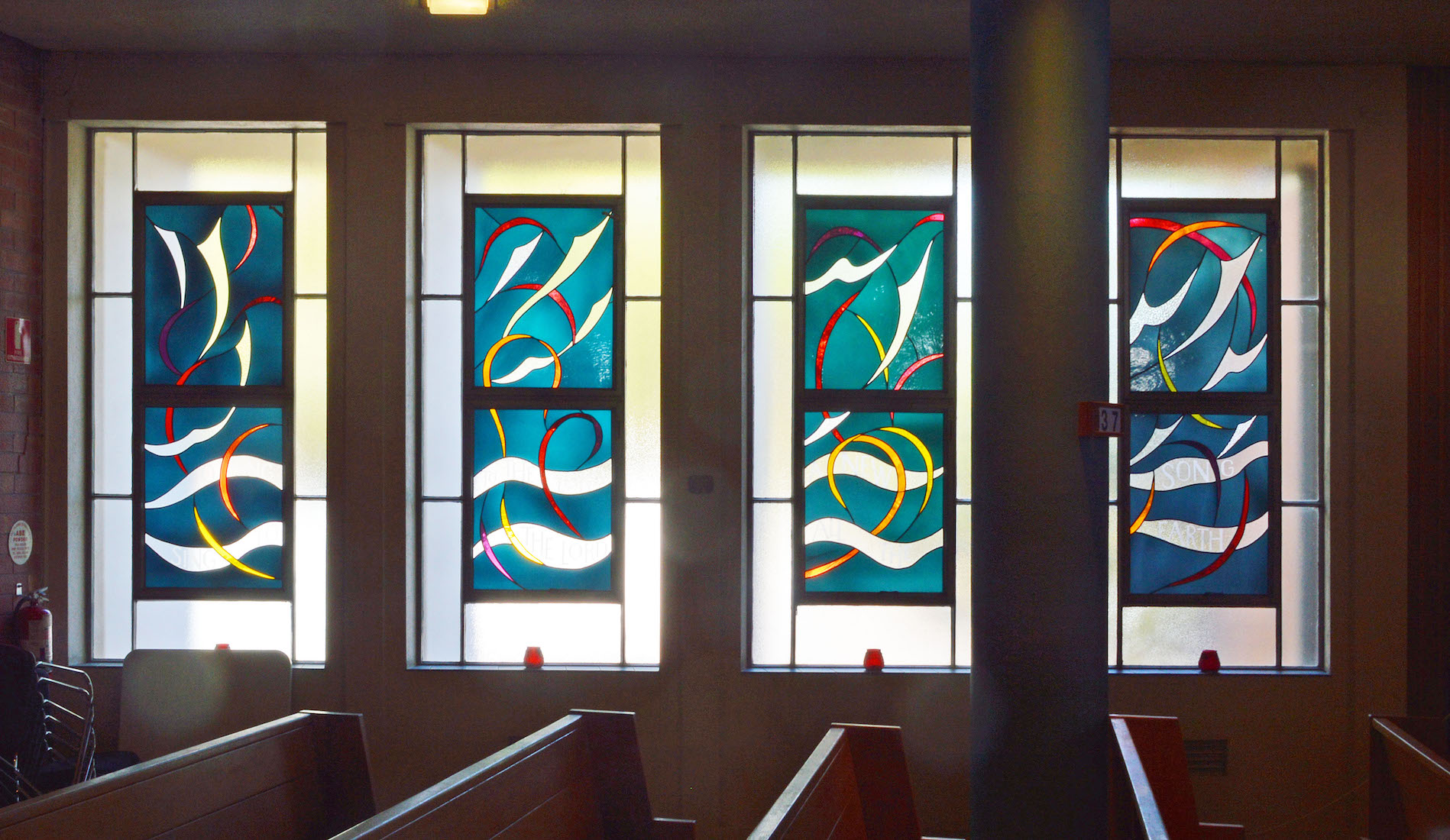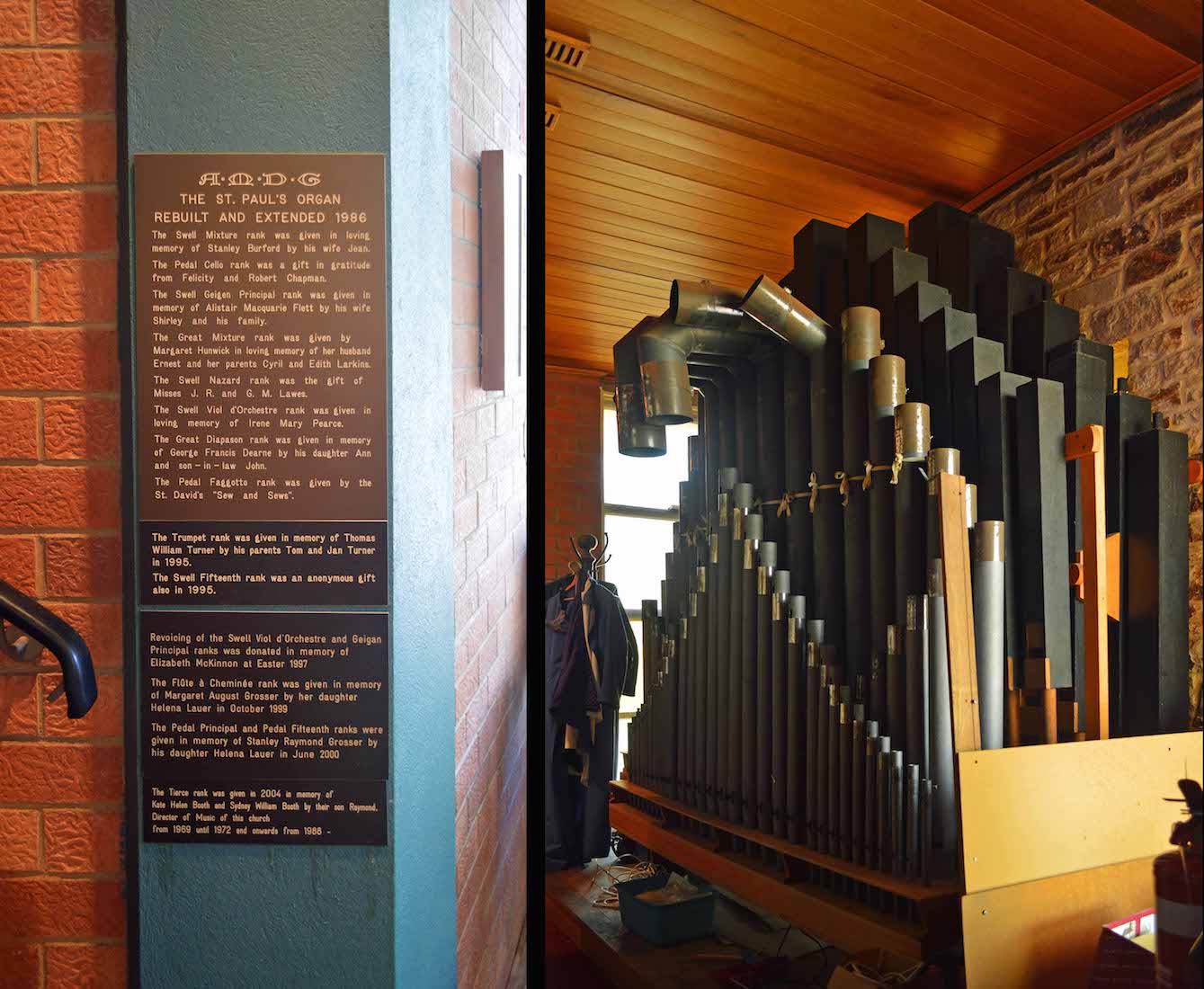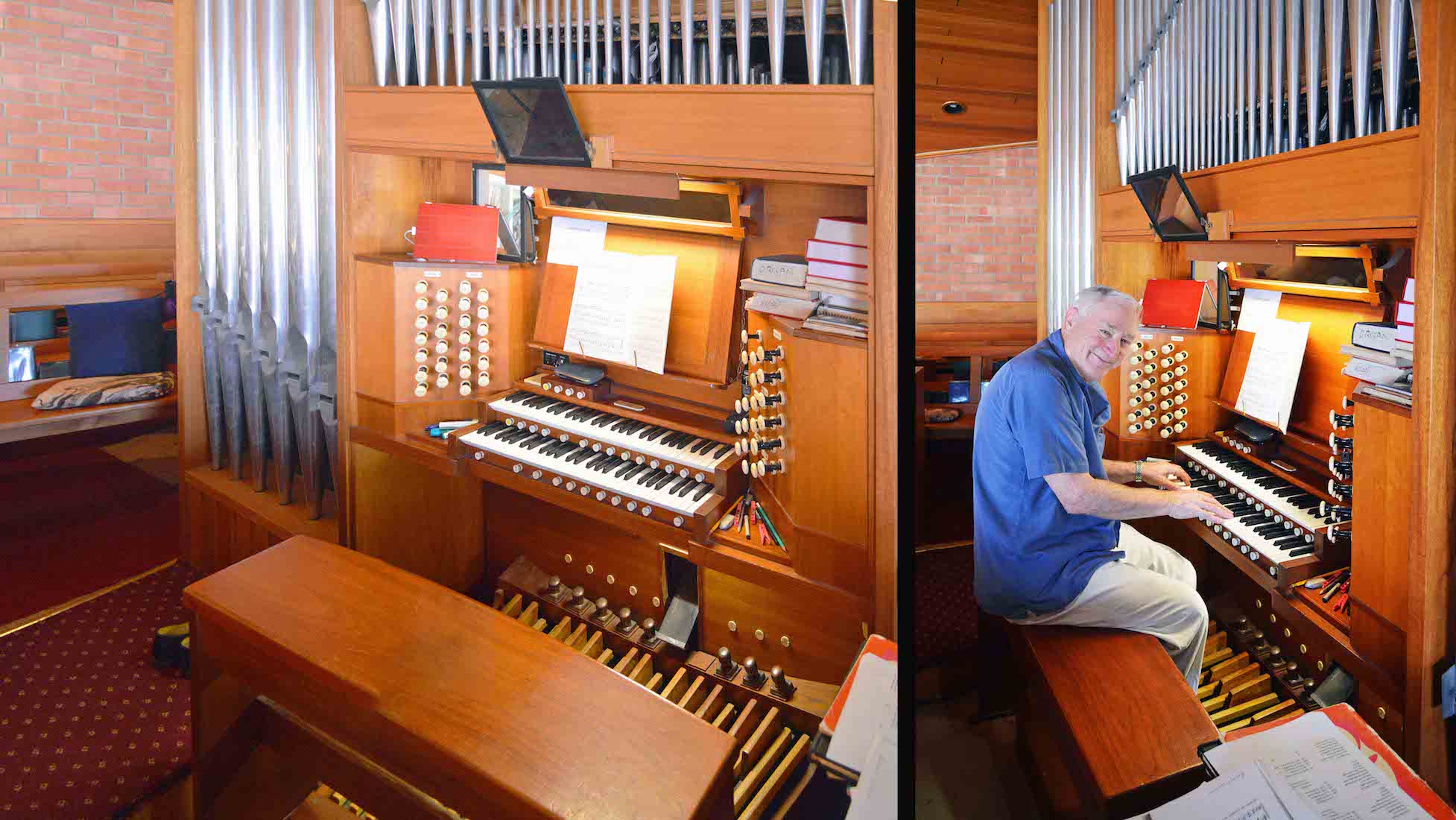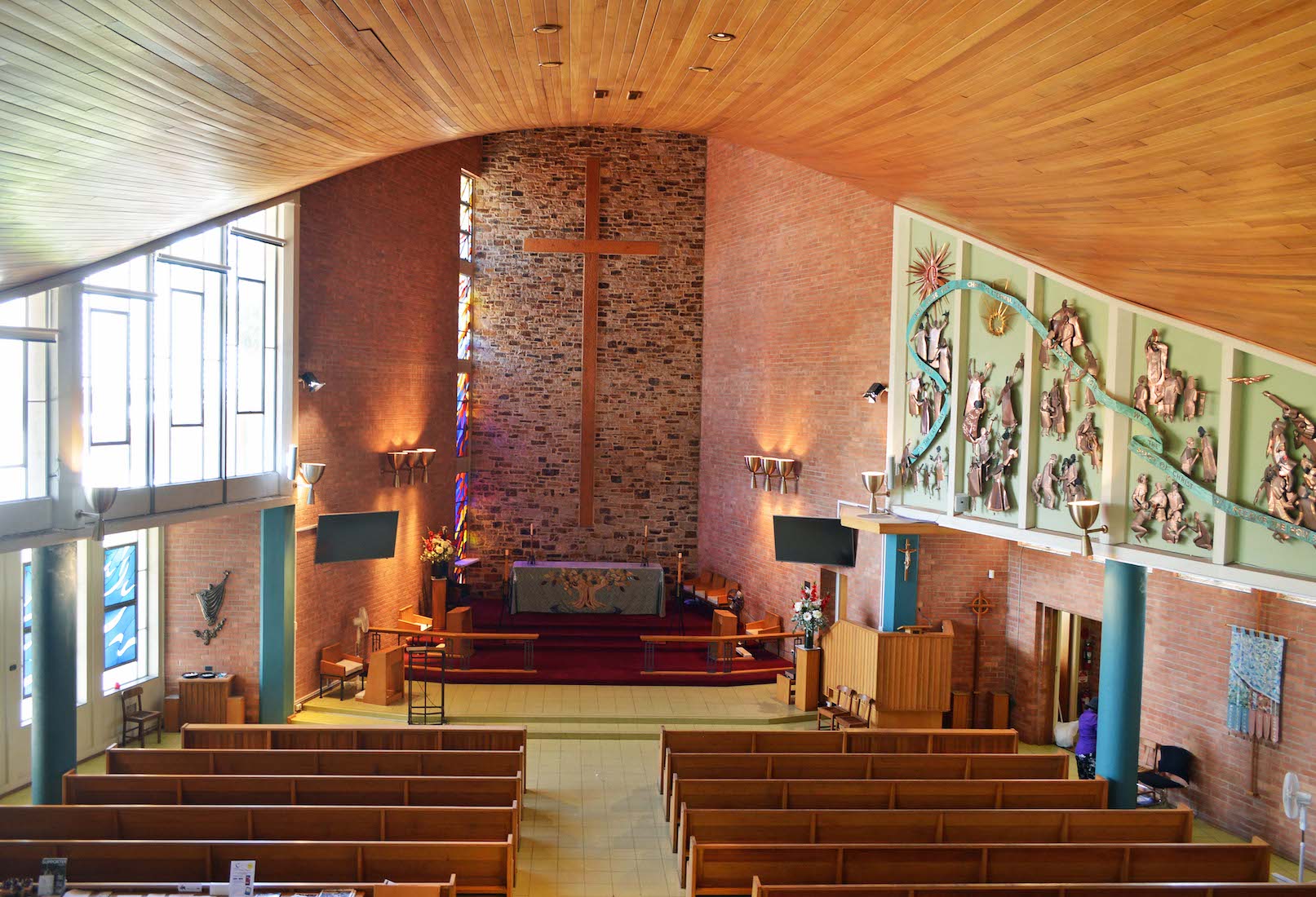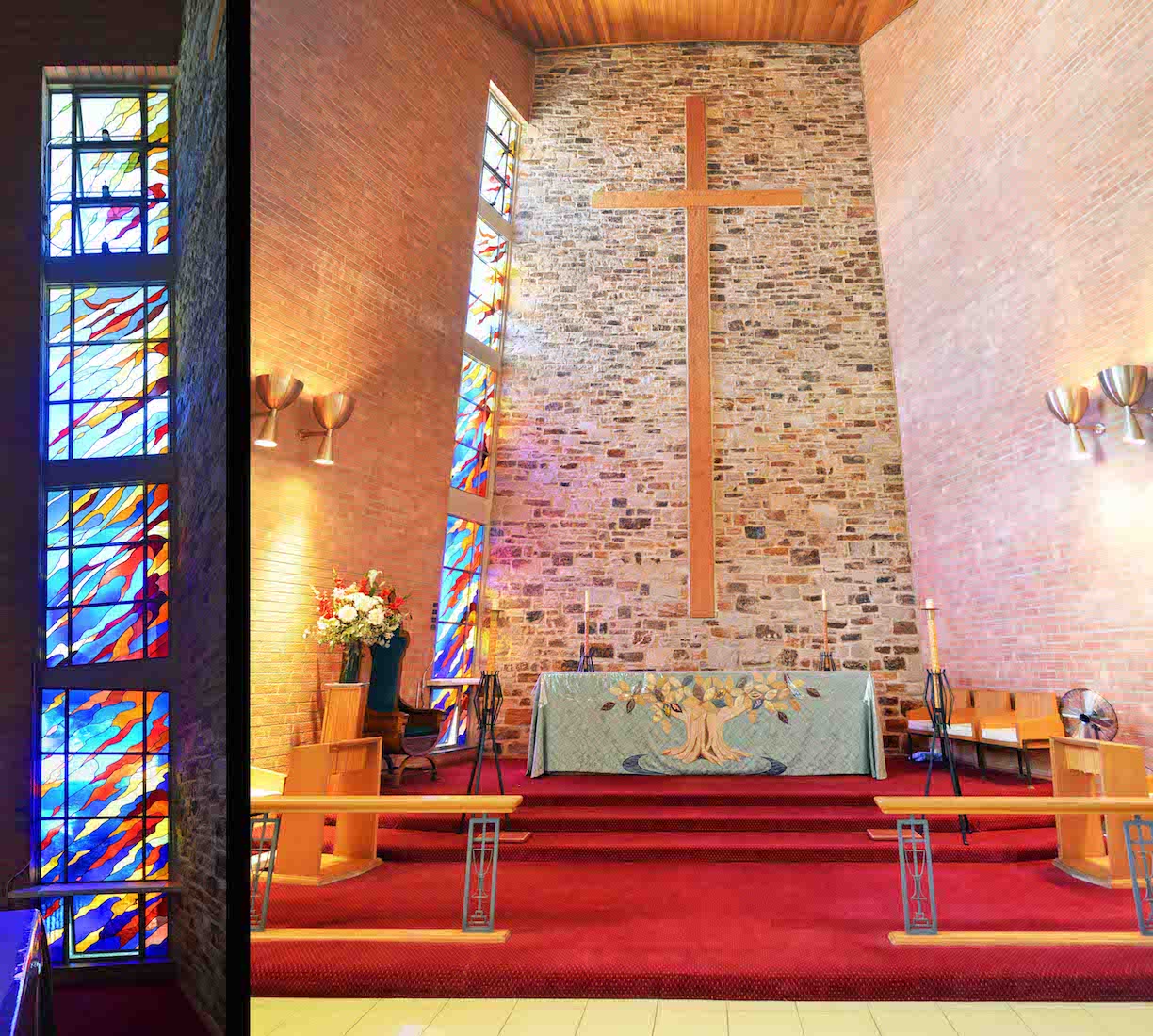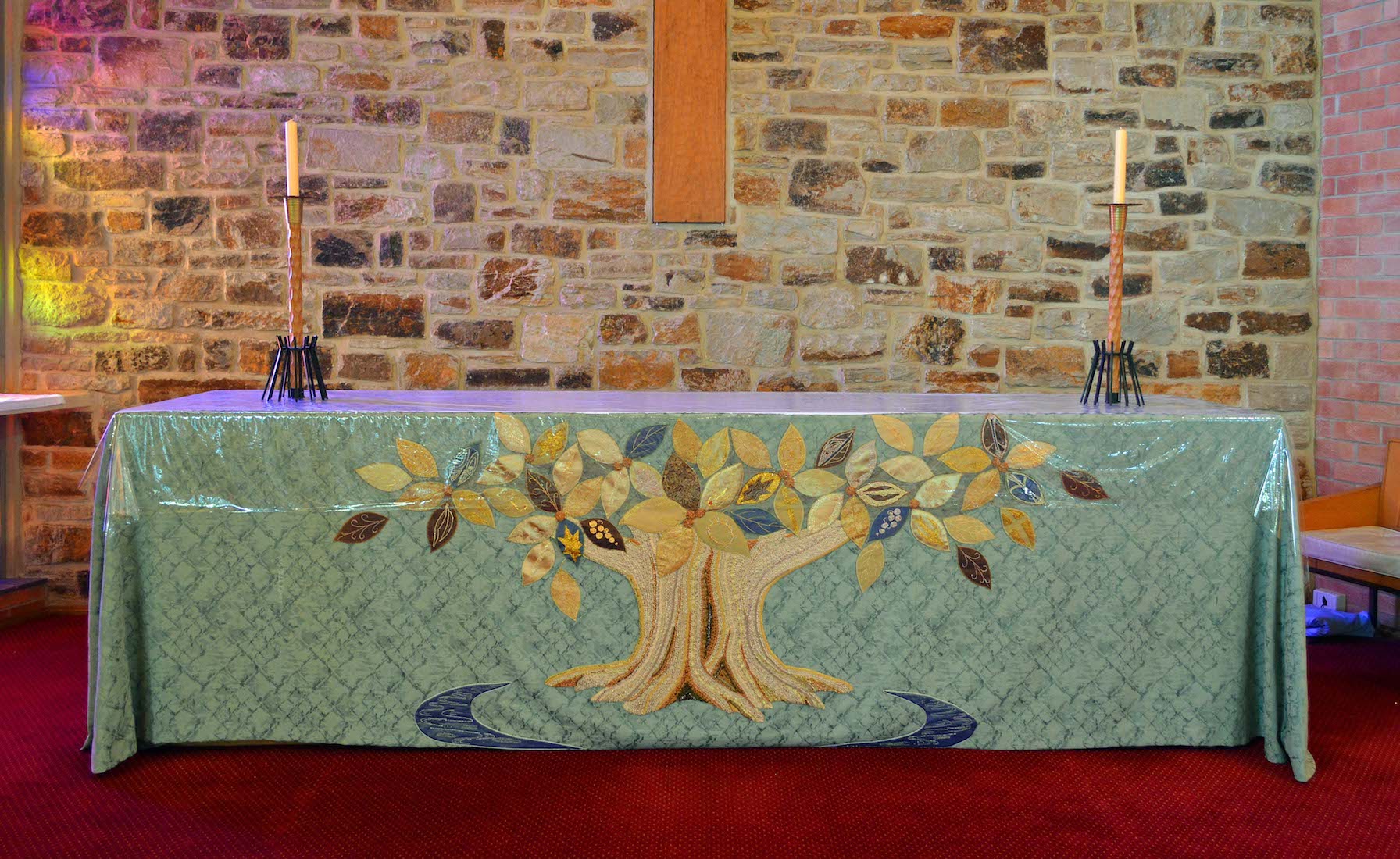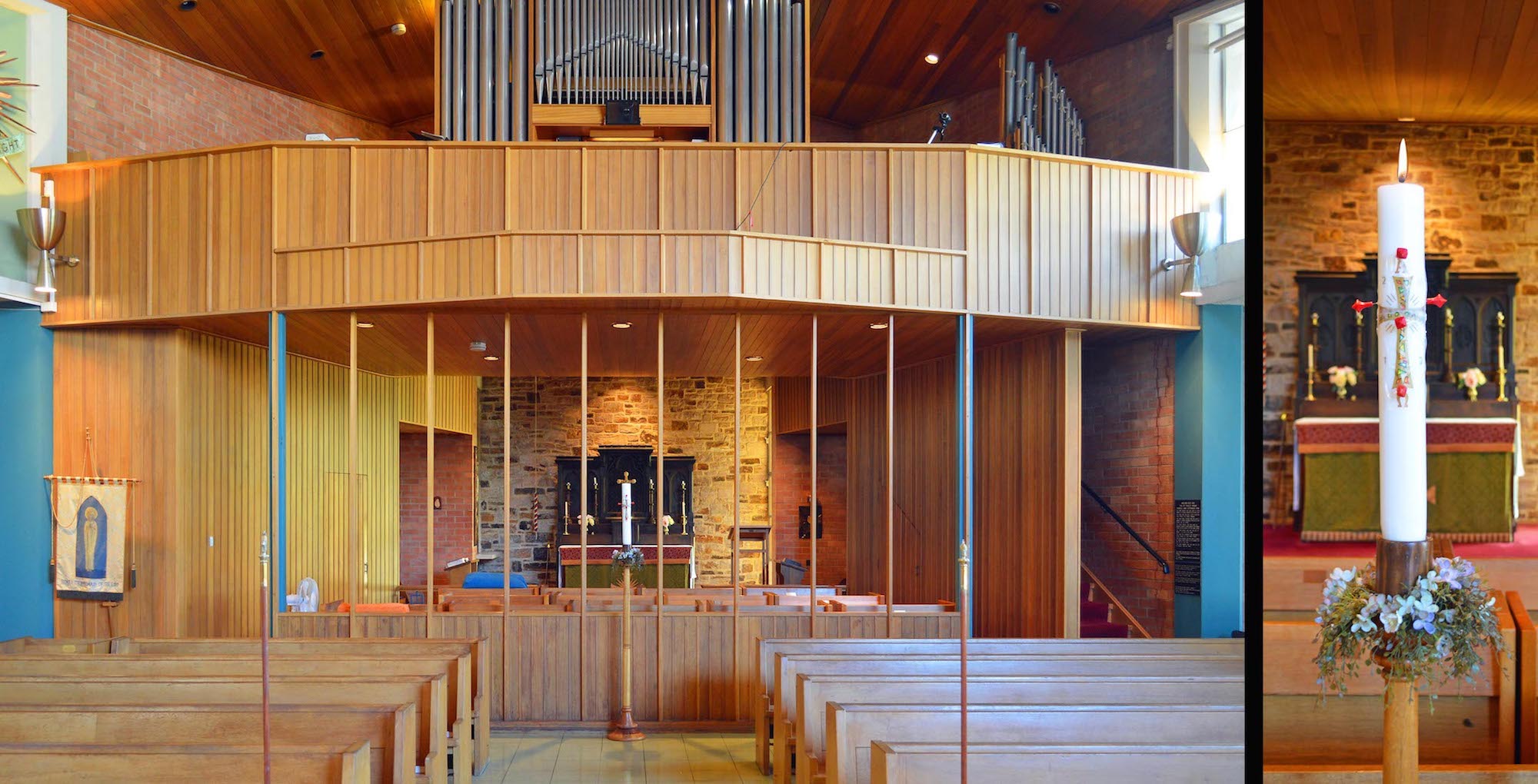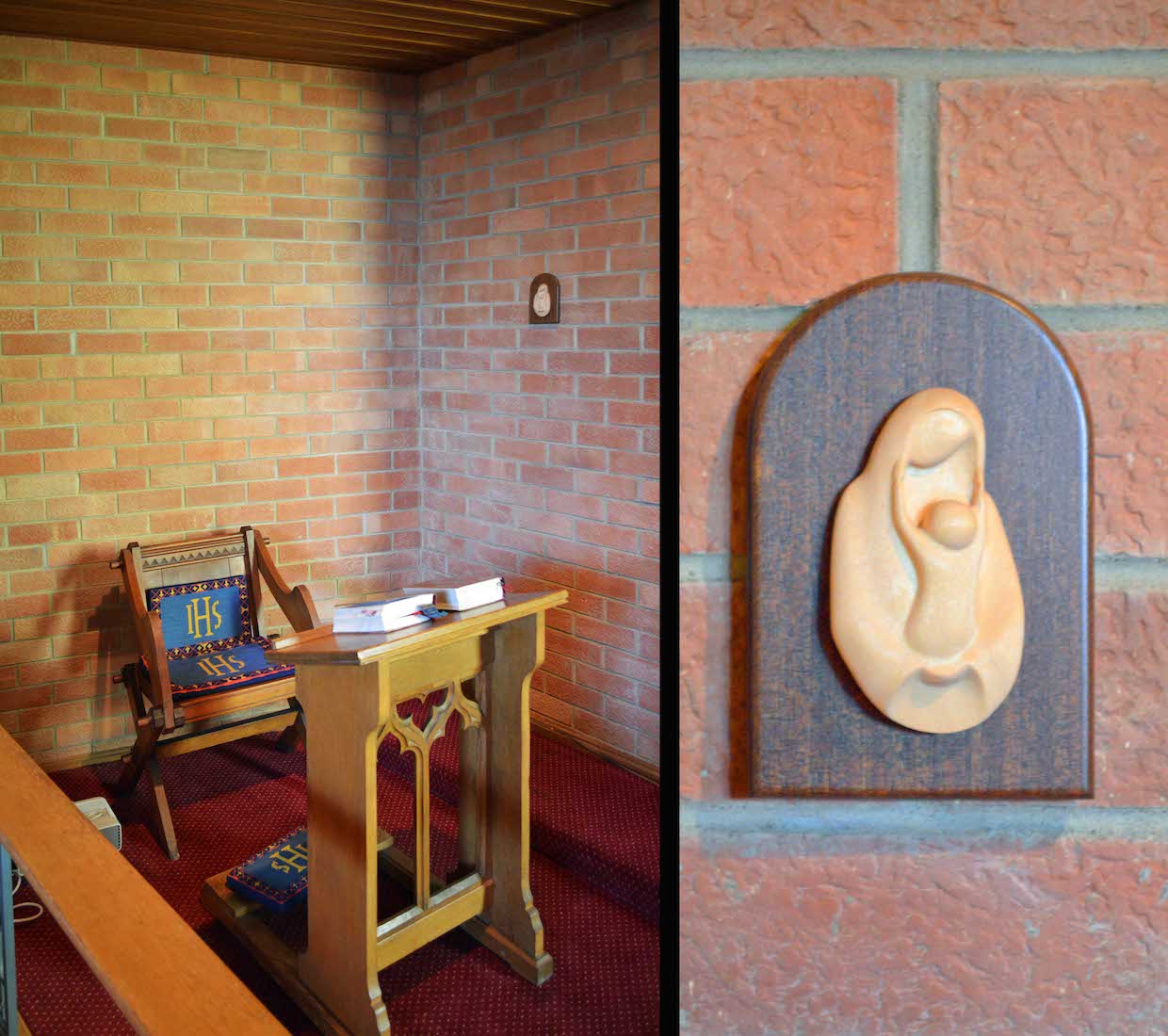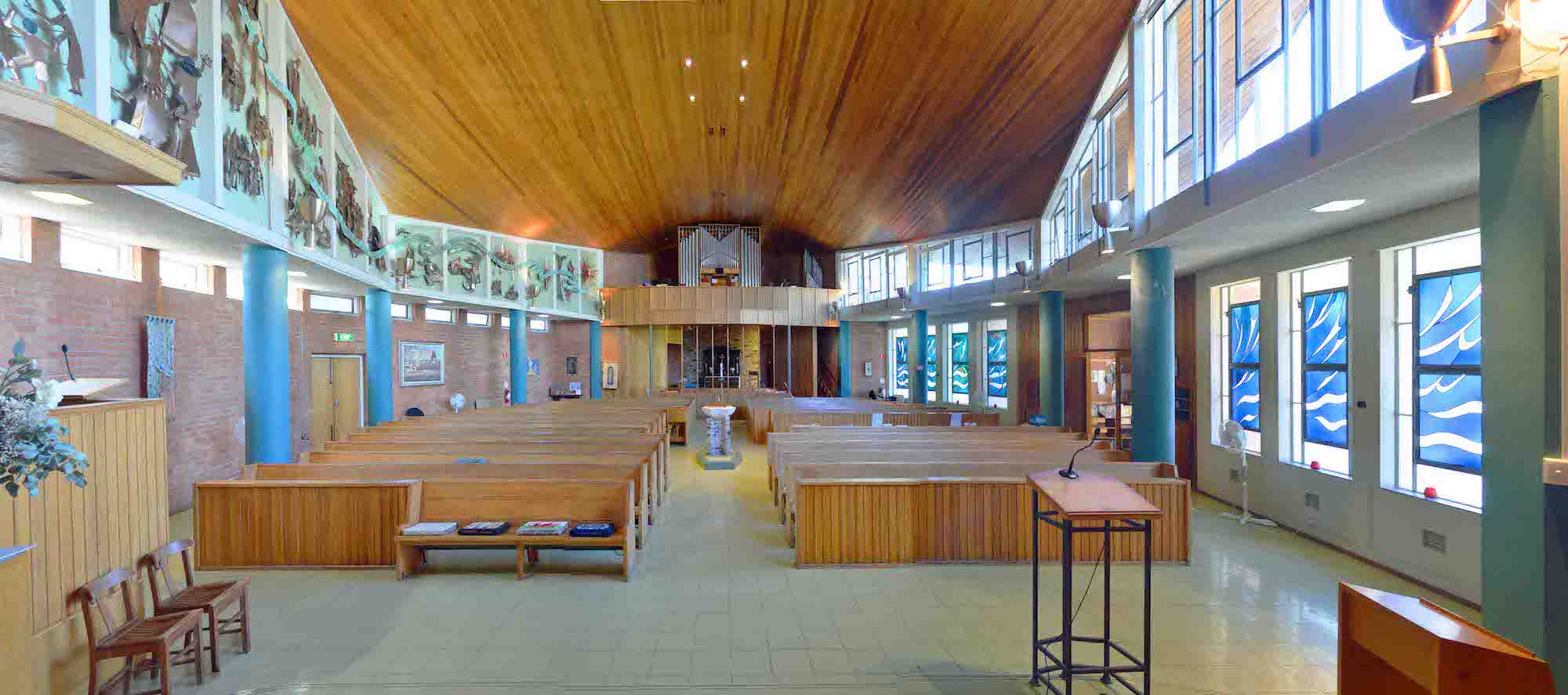
Before we continue our exploration, we stand by the front altar and look back towards the West wall. We note the colourful kneelers in the pews, various items on the walls, the further set of four windows at far right, and against the West wall, the organ with the Lady Chapel below. Looking carefully, there are also two wands standing just by the central font. INDEX
22. WARDENS’ WANDS
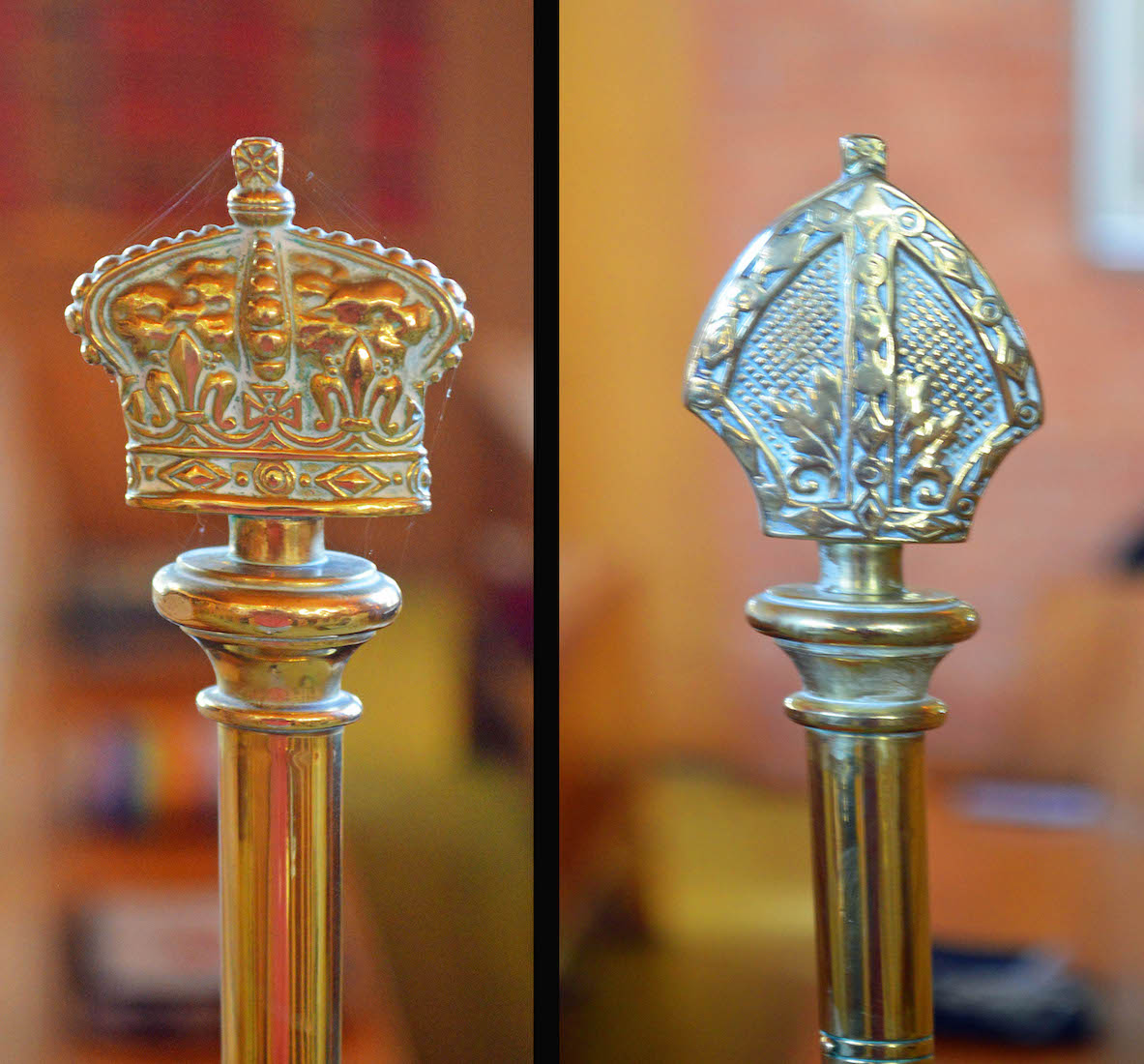
The Wardens’ wands hearken back to the earliest days of the Church of England. These liturgical items reflect a time when a sceptre or staff was carried to demonstrate a person’s importance and reinforce standing. But the staff also had practical purposes, including keeping the peace and commanding good behaviour and decorum in the church and churchyard. Early duties of a Church Warden involved putting a stop to rowdiness. On the other extreme, the Warden’s staff was also used to lightly tap parishioners to wake them during services. The wands are still carried by the Wardens during ceremonial processions.
23. KNEELERS
There are many colourful kneelers in St David’s Church. These carry designs of religious or local significance, along with the name of the creator or a person remembered.
24. SOUTH NAVE WALL
Along the South wall of the nave are twelve impressive panels created by local artist and Church member Pat Brooks. The theme of the ‘Twelve Copper Sculptures’ comes from the chorus of the carol ‘God rest ye merry gentlemen’. The display is to be viewed from right to left, and follows through from the Creation to the Consummation. A detailed brochure about the sculptures is available in the Church.
25. SCULPTURES DETAIL, WEST
These six panels depict from right to left: • 1 The Creation (‘Let there be light’ – Genesis 1:3); • 2 The Law and the Prophets (‘I shall be their God and they shall be my people’ – Jeremiah 31:33); • 3 The Annunciation (‘You shall bear a son, Jesus’ – Luke 1:31); • 4 The Incarnation (‘Your Saviour is born!’ – Luke 2:11); • 5 Miracle – raising the widow’s son (‘Those who believe in me will have everlasting life’ – John 6:47); • 6 Jesus predicts his resurrection (‘In three days I will raise the temple’ – John 2:19).
26. SCULPTURES DETAIL, EAST
Again, from right to left: • 7 The Resurrection (‘He is risen!’ – Matthew 28:6); • 8 The Day of Pentecost (‘Receive the Holy Spirit’ – John 20:22); • 9 The Christian Community (‘We are the body of Christ!’ – 1 Corinthians 12:27); • 10 John defines the Divine Nature (‘God is love’ – 1 John 4:8); • 11 Christ the Eternal King (‘Jesus Christ, the King of kings and Lord of Lords’ – 1 Tim 1:17, 6:15); • 12 The Consummation of all Creation (‘I will raise them up on the last day’ – John 6:44, 54).
27. SOUTH WALL BANNER, PAINTINGS
This banner and paintings are on the wall below the sculptures. The banner at left carries the name ‘St David’s, Burnside’ along with the functions of the church: Praying, Praising, Loving, Giving, Serving, Learning, Growing. The oil painting by late local artist and parishioner Primrose Cranston is entitled ‘The Last Horse-Drawn Tram to Burnside 1929’. It shows a typical horse-drawn tram of the 1920s which travelled from the city to Waterfall Terrace. The painting at right is an Aboriginal depiction of the Crucifixion.
28. CHILDREN’S CORNER
In the Southwest corner of the nave is a small children’s area with tables and chairs, books and papers. Many churches today have such an area, often with guided learning materials, to encourage young children and to preserve the peace!
29. INCUMBENTS LIST, ARCHANGEL MICHAEL
On the West wall above the children’s area is a list of past incumbents of the church. It lists the nine priests who have faithfully served in this parish between 1887 and 2017. The plaque was a gift from Iris Firth, 10th May 1988. At right, and set high above the organ is ‘St Michael the Archangel’. This small sculpture is a maquette of the statue of St Michael in St James Church, Mile End. The artist was Hans Knorr (born in Germany in 1915) who said: "With one wing raised like a great protective shield, Michael becomes the Angel of the Last Trumpet. I wanted something that was not really of this world - a messenger of another world."
30. BANNER, TROWEL, TEXT
Near the children’s area is the Mother's Union Banner, shown at left. The text reads: ‘Behold the handmaid of the Lord’. The banner depicts the Blessed Virgin Mary in fine needlepoint – executed by Hilda Hewitt. The banner was dedicated in 1962. On the North side hangs the trowel used to lay the foundation stone in 9.9.1962. And the Chinese text: ‘The grace of the Lord be always with you’ – Joseph Chung 2016, hangs just inside the main North entrance.
31. NORTH NAVE WINDOWS, WEST
These Western windows in the North nave wall are called the Pearce windows, and were also made by Cedar Prest. They are dedicated to the memory of Irene Mary Pearce (1912-1985). "O Sing to the Lord a new song, Sing to the Lord all the earth." Set on a solid background of dusky blue-green, the text is written on waves of silvery white. Ribbons of red, purple, pink, yellow and orange swirl around the white waves. The windows are near the organ, and Cedar Prest took inspiration for these windows from contrapuntal music e.g. Bach, whereby a melody is intertwined with embellishments. These windows link with the nearby Hammill Windows.
32. TO THE ORGAN
The first organ in the present St David's building was a small organ built by J E Dodd. It was purchased from the Church of the Epiphany, Crafers, and installed at St David’s in 1963. Some two decades later it was sold to the Roman Catholic Church of St Joan of Arc, in Victor Harbor. The present organ originated at St Paul's, Pulteney Street, Adelaide. This instrument embodied something of the history of organ building in South Australia. Originally constructed in 1873 by Wolff, it was rebuilt and enlarged with some tonal improvements by the local firm of J E Dodd in 1903.
33. ORGAN CONSOLE
The console is finished in Queensland cedar and the casework in meranti to suit the woodwork in the church itself. This is enhanced by the Open Diapason rank in the front casework, made from a 70% tin alloy which gives a bright silver finish and a more brilliant tone than the plain metal pipes traditionally used for this rank. Additional ranks of pipes have been installed since 1986, resulting in a very well- equipped and versatile instrument.
34. NAVE FROM ORGAN GALLERY
Behind the high altar itself is a huge wooden cross set into a feature wall of local quarry stone. The finish on the cross was produced with an adze. After local tradesmen had struggled unsuccessfully to produce the desired finish using this largely forgotten art, a recent immigrant from Cyprus who had both the skills and all the necessary woodworking tools was found, and he produced a beautiful result. Let us investigate the sanctuary ... .
35. SANCTUARY AND WINDOW
The sanctuary window is dedicated to the memory of six parishioners: Graham Rossiter Gibbs, Levi Francis Gibbs, Jean Richardson, Keith Kirkup, Gladys Kirkup and Julia Rosa Lawes. Thirteen panels of coloured waves rise from the bottom windows in strong shades of blue, gold, red and orange to paler blues, browns, olives, yellows to silvery white. The overall effect is of a cascade of colour. In mid-afternoon, at certain seasons, the glowing colours are reflected on the stonework of the sanctuary.
36. ALTAR
The altar is covered by an altar cloth featuring a flourishing tree. Trees occur frequently in Scripture: we might think of the tree of life (Genesis 2:9), the picture of the tree in Psalm 1, and the tree of Calvary (1 Peter 2:24). The altar is the focus of action in a Christian service, as it is from here that the Eucharist is administered.
37. SANCTUARY CANDLESTICKS AND CHAIR
There is little sanctuary furniture in St David’s. Apart from the altar we might mention the interesting candles, and the special chair. Apart from the Paschal candle (#38) there seems to be little reason why candles occur so frequently in churches, apart from a long tradition in providing light. We complete our investigation of this lovely Church by finally turning to the Lady Chapel.
38. LADY CHAPEL AND PASCHAL CANDLE
The Lady Chapel is against the West wall, and beneath the choir and organ gallery. Just outside stands the Paschal Candle – a feature common to all Anglican churches. The Paschal Candle has its origins in the early church. Tradition suggests that St. Ambrose made this candle prominent during the Easter season late in the third century. The flame of the Paschal candle symbolizes Christ’s illuminating light, and his presence in the midst of his people.
39. LADY CHAPEL
We stand at the rear of the Lady Chapel facing the altar. On either side is a small alcove. To the left of the altar is a special copper engraving and an old stained glass window. Straight ahead is the altar with its reredos, and Cross standing on a locked aumbry. This is a sacred space for peaceful contemplation.
40. CHAPEL SOUTH ALCOVE, MADONNA
The South chapel on our left contains one of the two prayer desks from the old church, which were given in memory of Catherine Benda. On the wall is a delightful figure of Madonna and Child; it appears to be modern, but is simple and expressive.



